Posts By: Lindsay Ostrom›Show All
Filipino Fried Chicken Recipe
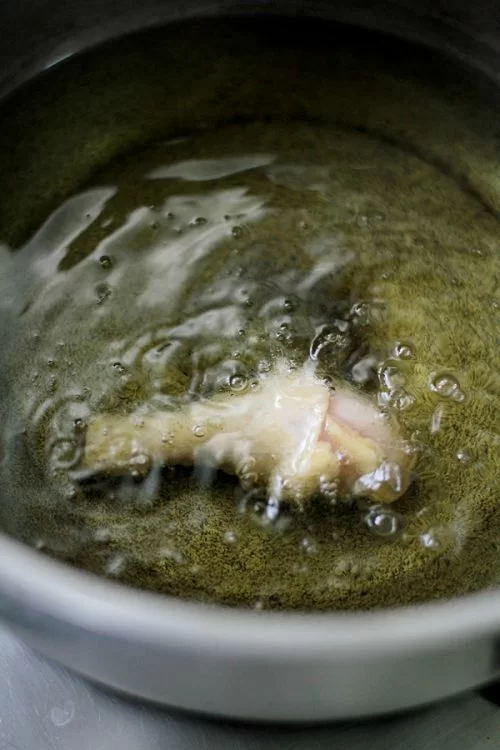
When we lived in the Philippines, I was really surprised to find out how much Filipinos love fried chicken.
Fried chicken is EVERYWHERE - at all restaurants and fast food places and even sold by vendors from little carts on the street. CSC is no exception! Fried chicken is a hit with all the kids.
This picture just cracks me up: it's the big plastic bucket where the aunties marinate the chicken. It's labeled "Monday".

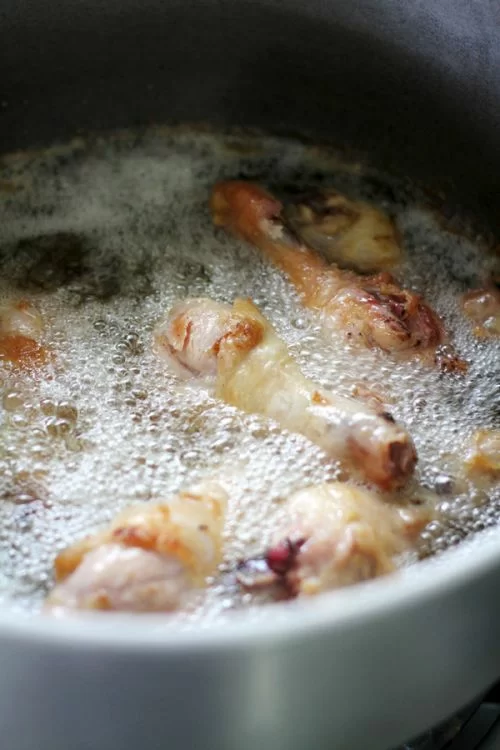
After you marinate the chicken, you put it into a pan of hot oil. Auntie Elvira kept the heat really low to cook the chicken long and slow. I was also really interested to find out that they weren't putting any breading on the chicken. The marinating and the crispy skin are enough to flavor the chicken after it's been fried.

Fried Chicken
Recipe from the Cherne house
2 lb. chicken drumsticks
1-2 teaspoon minced garlic
1-2 teaspoon minced onion
1 tablespoon oyster sauce
1 teaspoon black pepper
1 teaspoon salt
1 tablespoon seasoning mix*
1 egg
1 tablespoon cornstarch
1-2 cups oil for frying
1.
Place the raw chicken in a large bowl. Add the garlic, onion, oyster
sauce, black pepper, salt, seasoning mix, egg, and cornstarch. Stir
until the chicken is evenly coated.
2. Heat oil in a large pot over
medium heat. When the oil is hot, place the chicken in the oil. The oil
should cover the chicken pieces almost completely and it will bubble
gently as the chicken cooks. Continue to fry the chicken until the skin
is golden brown and crispy. The amount of time you’ll need depends on
the temperature of the oil. Auntie Elvira keeps the heat low and fries
each piece for at least 15 minutes.
3. Remove from the oil and set on paper towels to drain excess oil.
*The seasoning mix that they use is called Magic Sarap and it basically adds a very salty flavor. You could use any kind of seasoning salt you like to give the chicken more flavor.
Humba Recipe
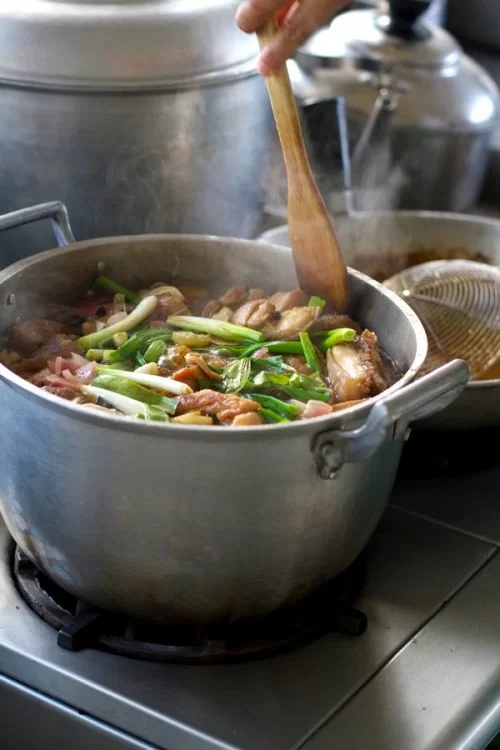
Humba was another one of my most favorite Filipino recipes, so when I had the chance to watch the aunties in Eicher prepare this meal I was so thrilled.
Humba is a variation of pork adobo. It's salty-sweet, with just a little bit of acidity, and the meat is completely tender and full of flavor.
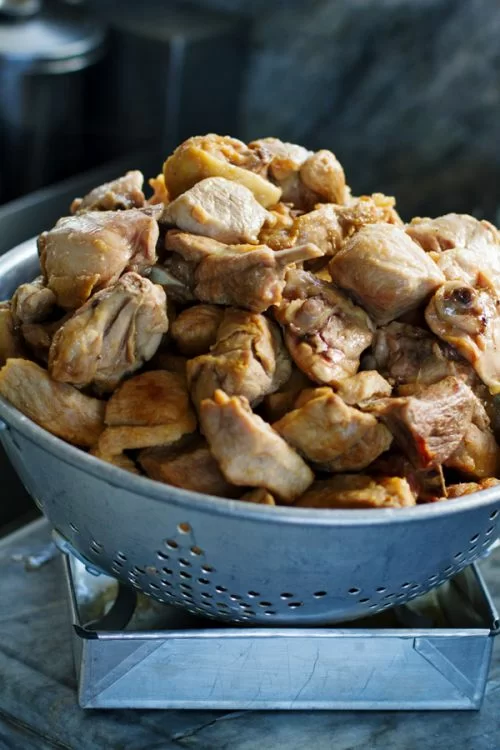
This is going to be a little scary for us non-Filipinos, I know, but in order to really make this good you need to buy pork belly (pictured above). It just doesn't compare when you use a different cut of pork. Even if you don't want to actually eat the fat on the pork belly, you still need it to cook with the lean parts so that it gives off that flavor.
First you fry the meat, and then you let it simmer together for a while with all this good stuff....
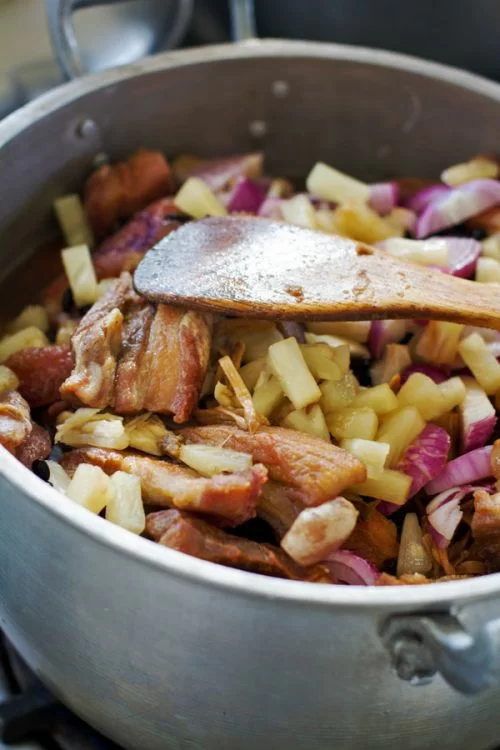
Until it becomes this golden, delicious, saucy meat that goes perfectly over a pile of hot rice.
So, so good.

Humba
Recipe from the Eicher house
2 lb. bone-in or boneless pork belly*
1-2 cups oil for frying
1 tablespoon azucena (substitute onion)
1-2 bay leaves
1 onion, chopped
1 tablespoons oyster sauce
2 tablespoons soy sauce (more to taste)
¼ cup pineapple tidbits
¼ cup black beans
¼ cup brown sugar
¼ cup vinegar
5 cloves garlic, peeled and smashed
1 ¼ cup water
½ cup green onions
1. Separate the fat from the lean meat by cutting the pork belly into medium sized pieces (about 2 inch by 1 inch).
2.
Heat the oil in a large frying pan over medium low heat and cook the
pieces of pork until golden brown, about 15 minutes. Remove from oil and
drain in a bowl lined with paper towels.
3. Transfer the pork to a
large pot and add all the remaining ingredients except the green onions.
Mix well and bring to a low boil over medium heat. Cover and simmer,
stirring occasionally. After 30 minutes, add the green onions and stir
to mix them into the pot.
4. Cover again and simmer for an additional 30 minutes, or until the pork is very tender.
*It
really is best to make this with pork belly, even though it might
require a trip to a special meat market to find it. The CSC aunties use
bone-in pork belly. Since each piece of pork belly has both a lean part
and a fatty part, it makes the meat extremely tender and full of flavor,
even if you choose not to eat the fatty part. I've made this with
pork sirloin as a subsitution, and I was disappointed with how much
tougher the meat was than with the original pork belly.
Filipino Chicken Barbecue Recipe
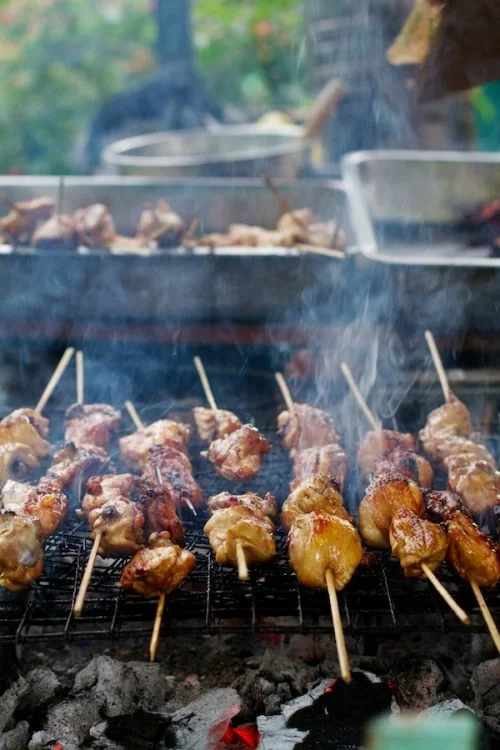
Everywhere you go in Cebu, you see people cooking meat like this on the side of the road. There's this smoky haze around them and the meat is stuck on skeweres and barbecued to perfection.
It's no different at CSC! The uncles have the job of being the barbecue-master and they know how to do it right. They hold a little piece of cardboard and wave the smoke away as the chicken cooks.
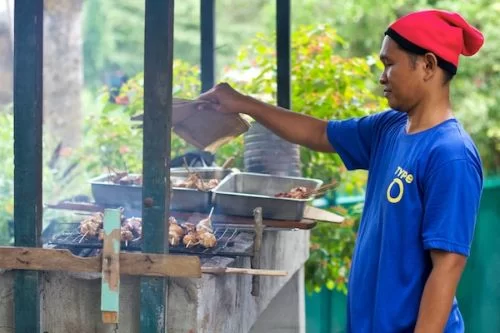
Speaking of chicken, I was surprised to see this guy standing so close by...

One thing that's interesting about CSC's barbecued chicken is that they barbecue it twice. The pan on the right side is for the skewers that have been on the grill just once. The pan on the left is for the skewers that have been on the grill TWICE. This gives the chicken an extra yummy crispy exterior and a smoky flavor. Delicious!
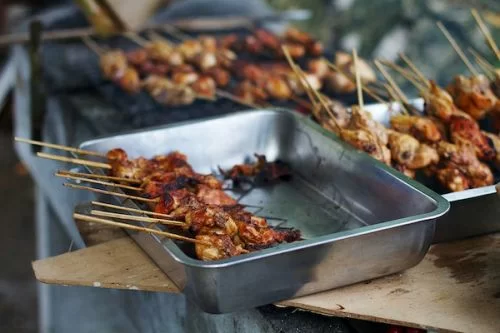
Chicken Barbecue
Recipe from the Eicher house
6 cloves garlic, crushed
1 teaspoon black pepper
2 tablespoons lime juice
2 tablespoons oyster sauce
1 tablespoon soy sauce
2 teaspoons salt
1 bouillon cube
2 tablespoons brown sugar
2 lbs. chicken thighs, cut into small pieces*
1. Combine all the ingredients except chicken to make a marinade. Marinate the chicken for 3-4 hours.
2.
Start a charcoal grill and let the coals get very hot. You want
smoking, flameless coals. Thread the chicken pieces onto wood skewers
and place on a metal grate over the coals. Brush with oil and grill
until the chicken is cooked through. Remove from heat and let rest for a
few minutes.
3. Repeat the grilling process with the cooked
chicken, brushing with oil as necessary and grilling a second time until
the outside of the chicken is a deep golden brown with a crispy
exterior.
*The CSC aunties and uncles use bone-in chicken thighs with skin, but you could substitute boneless chicken thighs with skin. Keep the skin because it's what makes each piece browned and crispy on the outside.
Filipino Spaghetti Recipe
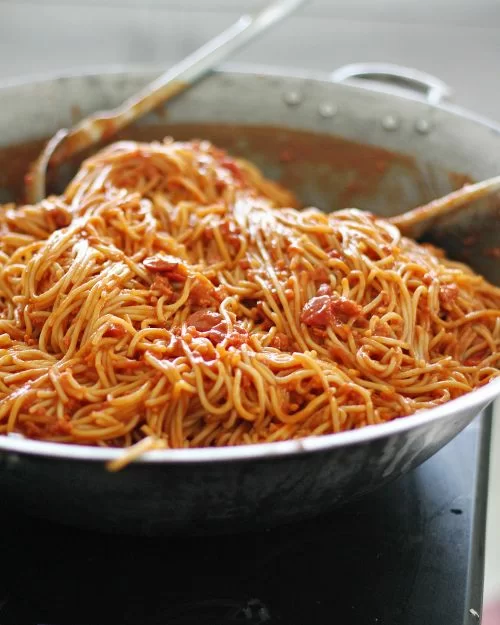
Now that's some spaghetti.
If you have been to a CSC birthday party or a McDonald's in the Philippines, you've probably had Filipino spaghetti.

I was really surprised when Auntie Pureza and Auntie Elvira showed me the ingredients for Filipino spaghetti. They are so similar to American spaghetti - like tomato paste, tomato sauce, onion, garlic, and ground meat.
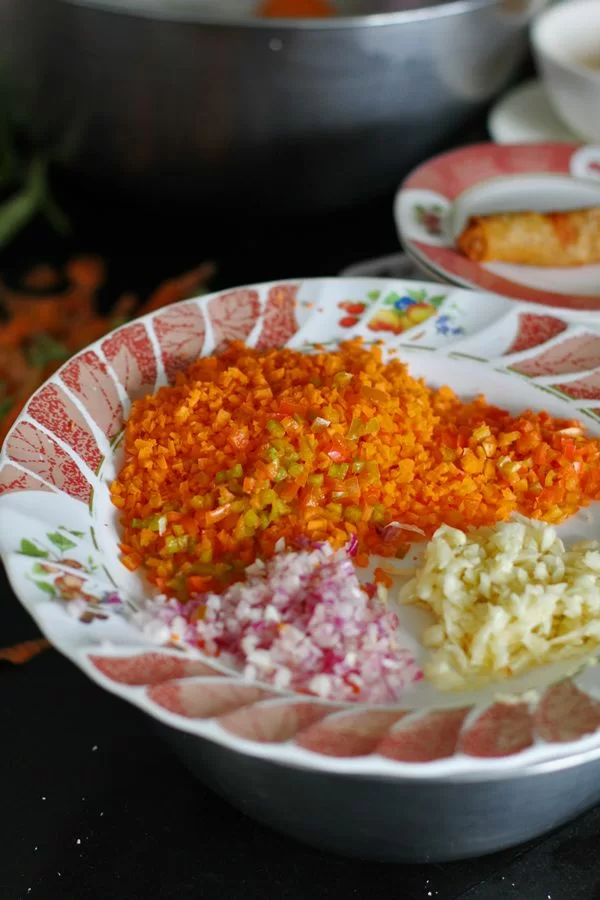
But if you've had Filipino spaghetti you know that there are two main differences to the spaghetti that we eat in other parts of the world.
1 - it's sweeter, and
2 - it has red hot dogs in it.
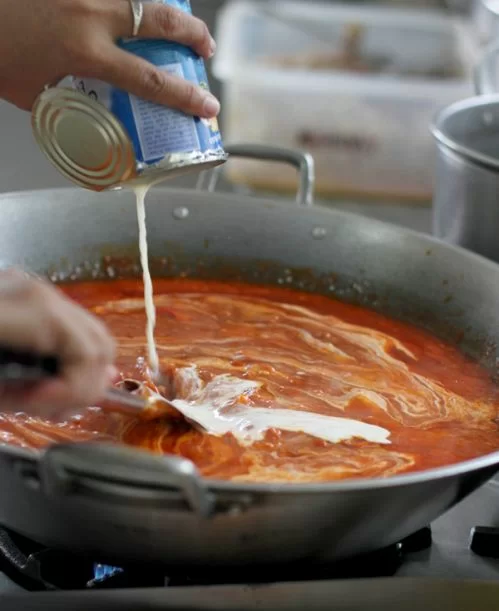
Okay, maybe the red hot dogs are just a CSC thing, but regardless, this creamy and semi-sweet spaghetti is definitely a kid favorite and a top birthday party meal request in all the houses at CSC.
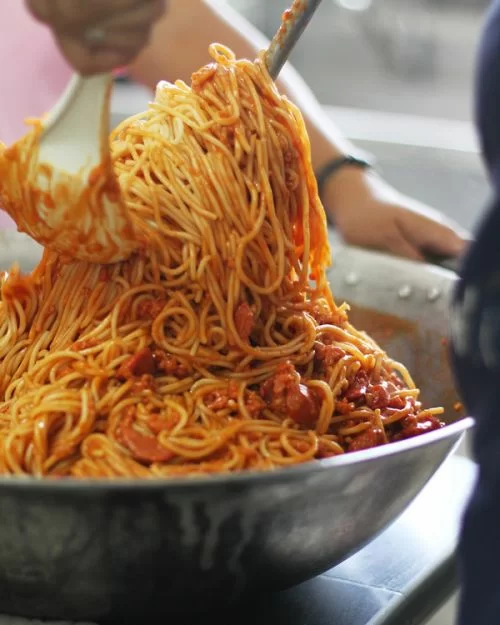
My favorite thing about this day was watching Auntie Pureza make this birthday party spaghetti for what was probably the millionth time in her life. Praise God for her dedication to fill the role as a temporary mother and birthday-spaghetti-maker for the children at CSC - and with a smile on her face.

Filipino Spaghetti
Recipe from the Cherne house
1 lb. uncooked spaghetti noodles
1 lb. Italian tomato sauce (very smooth)
8 ounces tomato paste
2 tablespoons minced onion
2 tablespoons minced garlic
2 tablespoons oil
1 lb. ground pork
½ cup minced carrots and red peppers
2 cups diced or thinly sliced hot dogs
1 cup water
1 tablespoon salt
1 teaspoon seasoning mix*
7 ounces evaporated milk
grated cheese for topping
1. Cook the noodles according to package directions. Set aside.
2.
Place the garlic, onion, and oil in a large saucepan or skillet. Saute
for 3-4 minutes or until soft and fragrant. Add the ground pork and
brown the meat until it’s completely cooked.
3. Add the minced
vegetables and hot dog pieces and stir to combine. Add the water and
allow the mixture to simmer for 10-15 minutes. Add the tomato sauce and
tomato paste to the meat and continue to simmer the mixture for another
10-15 minutes. Add the evaporated milk and salt and stir until
incorporated.
4. Combine the noodles and the sauce in a large pot
or mixing bowl. Top with grated cheese. At Cherne they grate a processed
cheese similar to Velveeta and let it melt into the top layer of the
spaghetti.
*The CSC aunties use a mix called Magic Sarap which
basically adds a very salty flavor. If you don't have anything like
this, just use salt and pepper to taste.
Note: I wondered what made this taste so much sweeter than the spaghetti that I'm used to, and I honestly couldn't find any ingredients in the recipe that would have necessarily added sweetness (i.e. no added sugar in the recipe). I think that the sauce that they use just tastes sweeter than other varieties and doesn't have so many spices.
Eicher's Pancit Recipe
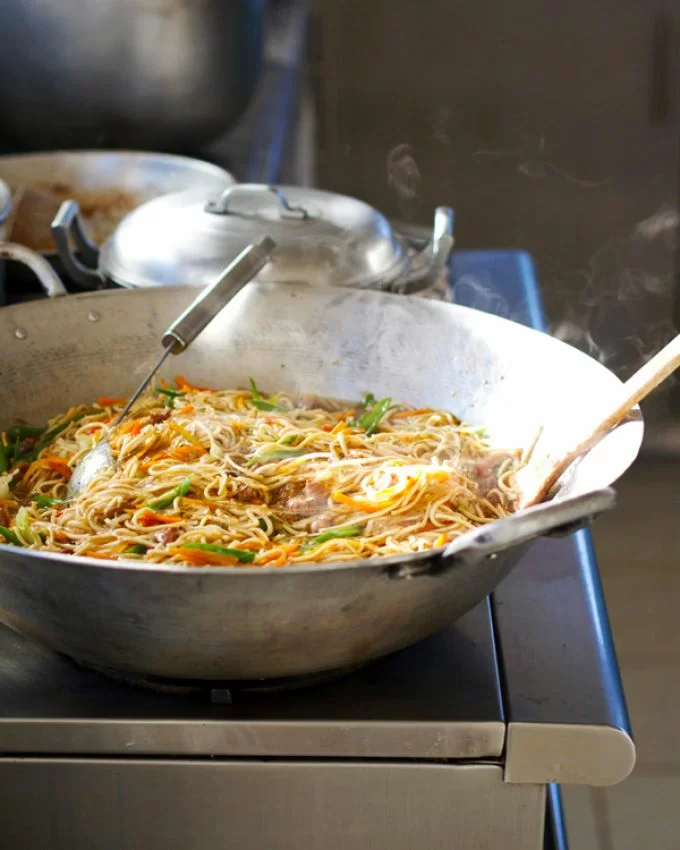
When we were still in the Philippines, I always loved watching Auntie Febe in the Eicher kitchen making all kinds of foods. But this particular meal and this particular batch of pancit canton was extra special because it happened to be for the sweetest little lady's birthday party.

She watched as the aunties washed and cut the vegetables, cooked the meat, simmered the sauce....
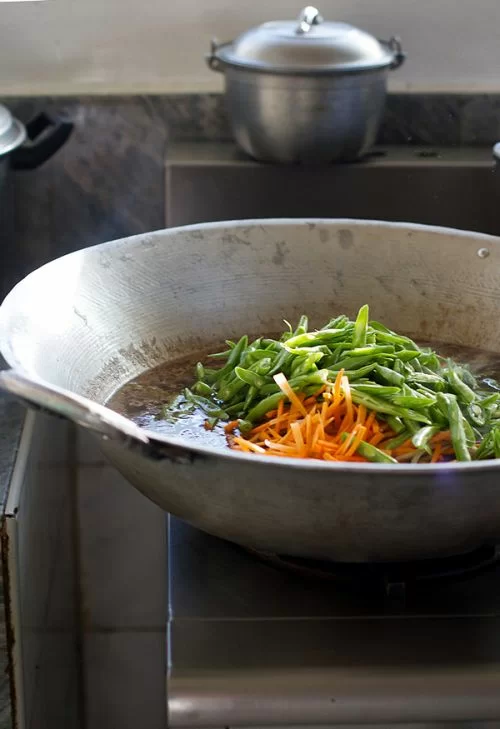
and then went about the task of getting all those pancit noodles into that one pot. There are a LOT of noodles required to feed this big family.
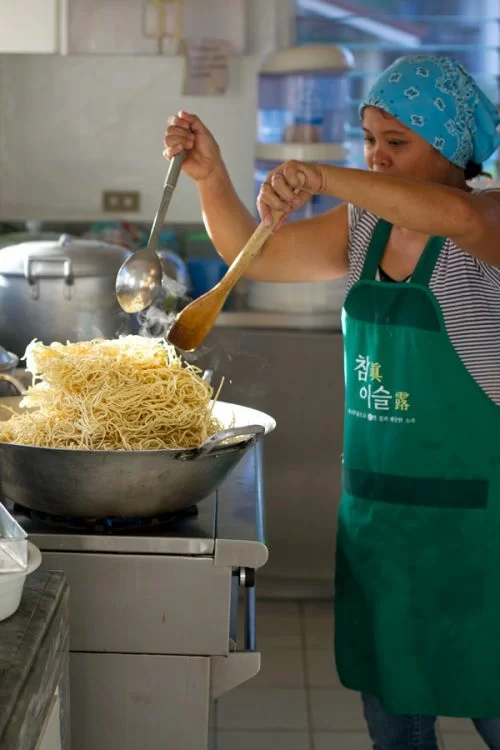
Pancit canton is and will always be one of my favorite dishes from the Philippines. The noodles soak up all the flavor of the broth where the veggies and meat are first simmered. It's just plain old nooddle-y comfort food. Squeeze a little calamansi on top and you're good to go.
Delicious pancit, coming right up!

Eicher’s Pancit (also known as Bam-i)
2 lbs. uncooked noodles – Auntie Febe used a combination of pancit and vermicelli
4 cups sliced mixed veggies: cabbage, carrots, bell peppers, and green onions
1 lb. lean pork, cut into very small pieces
½ cup oil
1 tablespoon soy sauce
6 cloves garlic, minced
1 onion, chopped
1 pork bouillon cube
6 cups water
1. Soak the vermicelli in water for about 5 minutes or until soft. Slice and chop the veggies.
2. Brown the pork in the oil with the soy sauce, garlic, and onion.
3. Add the water and bouillon cube to the pork and bring to a low simmer. Add the vegetables and cook for 5-10 minutes.
4. Add the uncooked pancit noodles and soaked vermicelli. Simmer over low heat until the noodles soak up all the broth.
You can buy pancit noodles at many Asian grocery stores.






